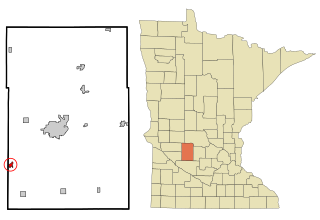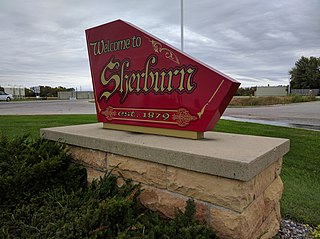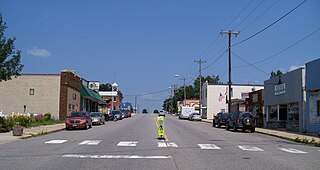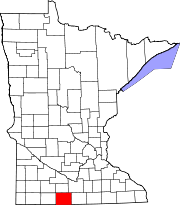
East Gull Lake is a city in Cass County, Minnesota, United States. The population was 986 at the 2020 census. The nearest semi-urban area is that of Brainerd and Baxter. It is part of the Brainerd Micropolitan Statistical Area. East Gull Lake is in Central Minnesota's Brainerd Lakes Area and takes its name from the largest lake within its borders, Gull Lake.

Lake Shore is a city in Cass County, Minnesota, United States. The population was 1,056 at the 2020 census. It is part of the Brainerd Micropolitan Statistical Area.

Ostrander is a city in Fillmore County, Minnesota, United States. The population was 254 at the 2010 census.

Kenyon is a city in southwestern Goodhue County, Minnesota, United States, located along the North Fork of the Zumbro River. It was founded in 1856 and named in honor of Kenyon College. It is known for the Boulevard of roses on main street, which is the namesake of the town festival "Rosefest" held every August. The population was 1,815 at the 2010 census.

Raymond is a city in southwest Kandiyohi County, Minnesota, United States. The population was 764 at the 2010 census.

Ivanhoe is a city in Lincoln County, Minnesota, United States. The population was 559 at the 2010 census. Since 1902 it has been the county seat of Lincoln County and is now the least populous county seat in Minnesota.

Alvarado is a city situated along the Snake River in Marshall County in the State of Minnesota. The population was 388 at the 2020 census.

Dunnell is a city in Martin County, Minnesota, United States. The population was 133 at the 2020 census, down from 167 in 2010.

Sherburn is a city in Martin County, Minnesota, United States. The population was 1,058 at the 2020 census.

Trimont is a city in Martin County, Minnesota, United States. The population was 705 at the 2020 census. The small community is located in southern Minnesota between Sherburn and St. James on Minnesota State Highway 4.

Racine is a city in Racine Township, Mower County, Minnesota, United States. The population was 442 at the 2010 census.

Underwood is a city in Otter Tail County, Minnesota, United States. The population was 356 at the 2020 census.

Sturgeon Lake is a city in Pine County, Minnesota, United States. The population was 439 at the 2010 census.

Sanborn is a city in Redwood County, Minnesota, United States. The population was 339 at the 2010 census.

Kimball is a city in Stearns County, Minnesota, United States. The population was 799 at the 2020 census. It is part of the St. Cloud Metropolitan Statistical Area.

Lake Henry is a city in Stearns County, Minnesota, United States. The population was 103 at the 2010 census. It is part of the St. Cloud Metropolitan Statistical Area.

Hammond is a city in Wabasha County, Minnesota, United States. The population was 132 at the 2010 census.

Ortonville is a city in Big Stone County in the U.S. state of Minnesota at the southern tip of Big Stone Lake, along the border with South Dakota. The population was 2,021 at the 2020 census. It is the county seat of Big Stone County. Big Stone Lake State Park is nearby.

Minnesota Lake is a city in Blue Earth and Faribault counties in the State of Minnesota. The population was 661 at the 2020 census. The bulk of the city is in Faribault County; a small part extends into Blue Earth County.

Ormsby is a city in Martin and Watonwan counties in the U.S. state of Minnesota. The population was 131 at the 2010 census.





















